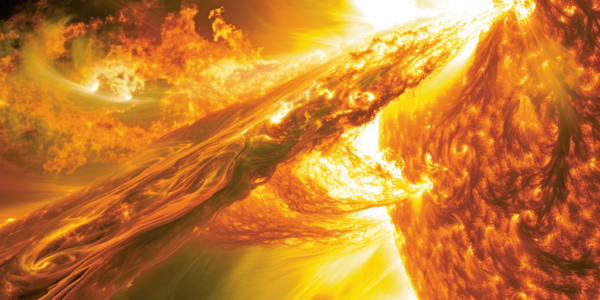NASA Captures Image of Strong Solar Flare
The Sun emitted a strong solar flare on Feb. 16, 2024, captured by NASA’s Solar Dynamics Observatory. Solar flares can impact communication, power grids, and spacecraft. This X2.5 flare is classified as one of the most intense, highlighting the importance of monitoring space weather. Visit NOAA’s Space Weather Prediction Center for forecasts and alerts.
Solar Explosion Triggers Communication Disruptions on Earth
An explosion on the sun has caused a massive plume of energized particles to soar through space at a speed of 900,000mph, triggering blackouts in Australia and South Asia. Physicists have identified the explosion as an M-class flare, which can lead to small (R1) to moderate (R2) radio blackouts on the daylight side of the Earth. Strong M-class flares, such as the one observed on Monday, have the potential to launch a coronal mass ejection (CME), comprising large clouds of plasma and magnetic field that erupt from the sun.
NASA Captures Powerful Solar Flare Erupting from the Sun
Nasa recently captured a powerful solar flare erupting from the Sun, causing immediate and diverse repercussions. The eruption, originating from sunspot AR3559, emitted a powerful M6.7-class solar flare in the early hours of Monday. This extreme ultraviolet flash was captured…



